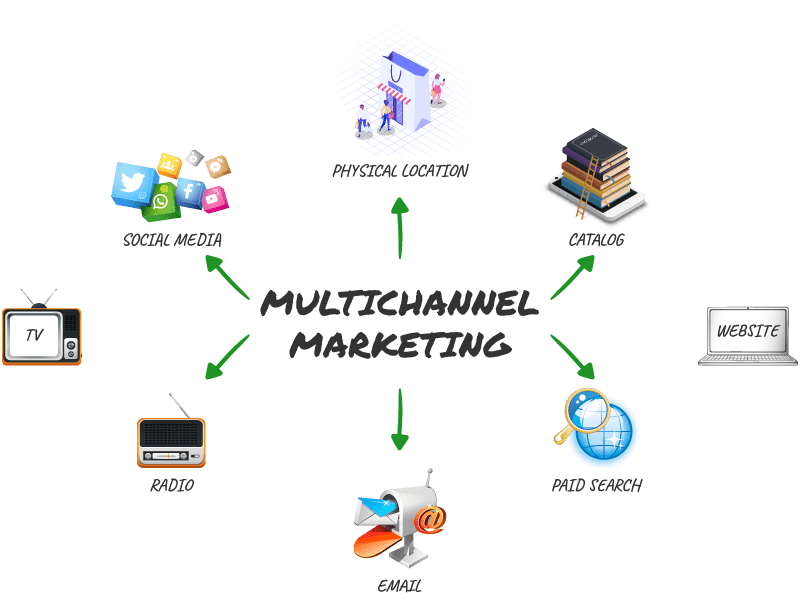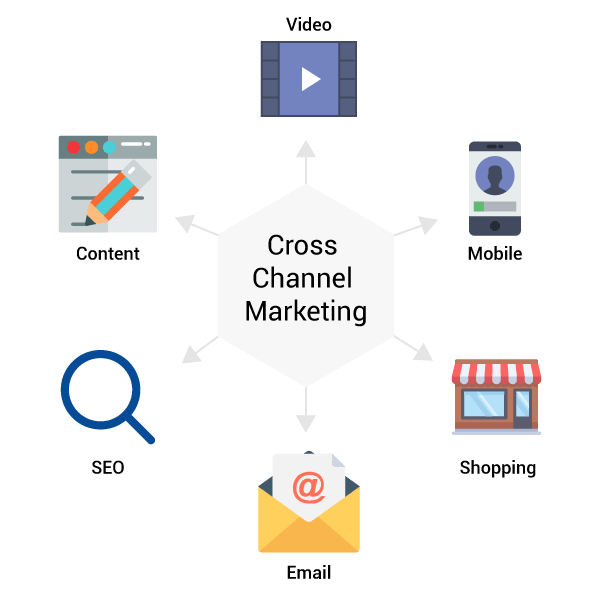The upsurge of new What are the different marketing channels has ascended the growth of an online business. Brands that were earlier using limited channels to engage with customers are now open to the exposure of these channels.
Various brands were using phones, emails, and tablets as the major key to engaging and communicating with customers. Today we have got access to more devices and more channels as well. Now customers seem to feel more comfortable with online shopping using multiple devices (laptops, smartphones, and tablets ).
Contents
Marketing Channels For Your Marketing Strategies
The latest scenario gives a siren call to the marketers to be available to the users all the time. This “ONLINE ACCESSIBILITY’’ enables users to have product knowledge before they actually decide to buy it. According to an intended survey, customers are using multiple devices to access a product’s info before buying it. In such a case, it becomes harder for brands to cater to customers more effectively.
Let’s take an example: Say if a customer looks up a product online on his mobile. Also, he seeks a plethora of information about the product online. He goes to the store but eventually orders the product from the tablet. How can we ensure that the devices and mediums are communicating with each other?
To simplify the process, marketers have started adopting different marketing channels to uplift their strategies.
What Are The Different Marketing Channels?
1. Multi-channel marketing
It implies that a marketer can use a blend of direct and indirect channels to interact with the customers i.e. websites, catalogs, emails, mobiles, etc. Also, it enables a customer to take action or buy a product using the channel of their choice. The main goal of multichannel marketing is to empower user choices.
Note: Although a marketer can target users on various devices and through various channels but there is no interaction amongst the brand channels. They are in competition with one another. So, a user has to stick to one channel only.

For example, A customer always orders online and for once, he goes to the brand store to buy the product. The salesperson won’t have access to his purchase history. Therefore, he can choose only one channel in the process.
2. Cross channel marketing

Cross channel marketing enables a marketer to engage with customers across all channels and devices. A marketer can target users on social media, through emails or websites across all devices. The main aim is to blend the brand’s channel to provide the user with a smooth and integrated experience
For example, A customer looks for an outfit in the brand store but is not quite sure of buying it at the moment. Later he decides to buy it and orders it online. Now channels are complementary to each other.
3. Omni-channel Marketing

Omni-channel marketing is somewhat similar to cross-channel marketing. But it provides one added incentive to the users and that incentive is the flexibility to use the channels simultaneously. As consumers are prone to use two channels at the same time.
For example, A customer can compare the product the price and read its reviews before buying a product at the store. Omni-channel strategies enable customers to have access to real-time information at any place. It doesn’t matter what channel they are using. Also, it empowers the user to break the gap between online and offline.
Your brand is a story unfolding across all customer touch points.
What Are The Pros and Cons of Different Marketing Channels?
1. Multi-channel marketing
PROS
- Broaden your horizons: Multi-channel marketing allows you to reach your audience through multiple channels. You can promote your products on various channels. For example: through paid search or on social media
- Attune your campaigns to your goals: Multi-channel marketing allows you to customize your campaigns according to your goals. For example – You can use this channel type to run a Facebook campaign in order to promote your products. Also, you can retarget marketing to the potential customers who clicked on your ads.
- Enhance conversions through multiple avenues: It gives users great exposure to know about you through various marketing channels and then finally buy the product.
CONS
- Adds up more marketing costs: More channels mean more costs and more time. There is a loophole here if a channel doesn’t fit- in your budget.
- Requires enormous customer research: The customer research undertaken for multi-channel marketing is vast and conducive. Thus a company must have enough resources to conduct the research.
- Needs much-advanced data analytics: There is no use of multi-channel marketing if you are not able to track what is working and whatnot. Multi-channel marketing is quite complex from the perception of data and analytics.
2. Cross-channel Marketing
PROS
- Multiple channels generate more visibility: Your business can fetch great attention with the support of multiple channels.
- Provide customers with more choices: Give your customers more choices in terms of channels so that they can prefer in which they feel more comfortable.
- Strengthen your brand reputation: It allows you to stay consistent across all mediums and channels which raises your brand reputation.
CONS
- Requires additional time and money: A marketing team requires more time and money in order to keep their campaigns and cross-promotions more compatible and consistent.
- Risk of handling all the channels productivity: You need to put all your efforts when you are promoting the products through multiple channels. You have to focus on all of them and not just one. Thus retaining productivity is a big issue.
3. Omnichannel Marketing
PROS
- Supports competitive spirit: A marketing company must implement omnichannel marketing in order to stay competent in the customer’s world. As consumers nowadays want answers to each of their queries. Omnichannel marketing works as a healer for better user engagement.
- Enhance products’ accessibility to customers: The most satisfied customers are those who can buy from several devices. Omnichannel marketing provides that apt flexibility to the users.

CONS
- Complex and comprehensive: In order to leave a long-lasting impression on your users, you must take all channels into account. What holds your ground is comprehensive customer research.
- Necessitates open communication: Omni-channel marketing requires open communication amongst all your marketing team, whether it’s your customer service team or shop floor assistants.

After having an extensive discussion over the pros and cons of all the above customer engagement approaches. You can plan out which works for your business. Earlier multi-channel marketing and cross-channel marketing were enough in chalking out a successful strategy. Now as the customers have become omnipresent so does a marketer who has to grow his potentialities to match with the customer intensity.
Conclusion
Most of the top brands are using these marketing channels to increase user engagement. Also, they have seen a profound improvement in sales rates and customer engagement.

























 Email
Email SMS
SMS Whatsapp
Whatsapp Web Push
Web Push App Push
App Push Popups
Popups Channel A/B Testing
Channel A/B Testing  Control groups Analysis
Control groups Analysis Frequency Capping
Frequency Capping Funnel Analysis
Funnel Analysis Cohort Analysis
Cohort Analysis RFM Analysis
RFM Analysis Signup Forms
Signup Forms Surveys
Surveys NPS
NPS Landing pages personalization
Landing pages personalization  Website A/B Testing
Website A/B Testing  PWA/TWA
PWA/TWA Heatmaps
Heatmaps Session Recording
Session Recording Wix
Wix Shopify
Shopify Magento
Magento Woocommerce
Woocommerce eCommerce D2C
eCommerce D2C  Mutual Funds
Mutual Funds Insurance
Insurance Lending
Lending  Recipes
Recipes  Product Updates
Product Updates App Marketplace
App Marketplace Academy
Academy

